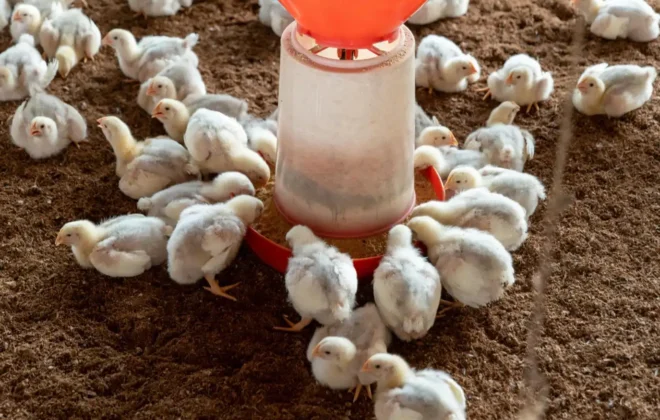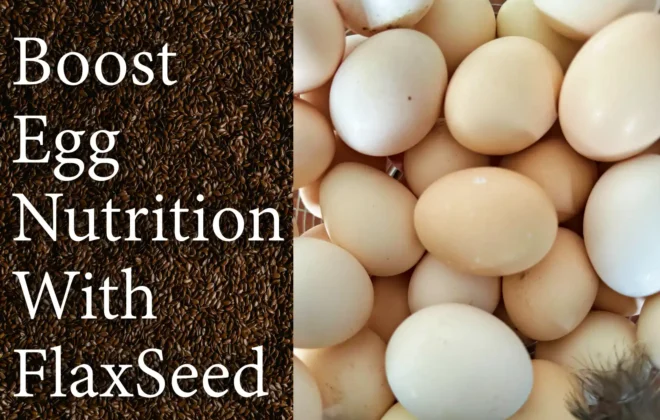
Grow Chicken’s Fodder at Home
Raising healthy, happy chickens isn’t just about providing a coop and some grain—it’s about nourishing them with the right balance of nutrients. While commercial feeds do the job, there’s something deeply satisfying (and cost-effective) about growing your own fresh fodder at home. Not only does this add vibrant green nutrition to your flock’s diet, but it also cuts feed costs while ensuring your birds enjoy a healthier, more natural lifestyle.
The good news? Growing fodder doesn’t require a farm, fancy equipment, or even much space. With just a little effort, you can set up a simple system in your kitchen, balcony, or backyard. Let’s break down the process step by step.
Step 1: Select Your Seeds
The foundation of good fodder lies in the seeds. Choose high-quality, untreated seeds suitable for sprouting. Popular options include barley, wheat, oats, alfalfa, and rye. Many chicken keepers also enjoy mixing two or three seed types for variety and a richer nutrient profile.
Pro tip:
Barley tends to sprout quickly and is a favorite among backyard chicken keepers.
Step 2: Soak the Seeds
To awaken the seeds and kickstart germination, soak them in clean water for 8–12 hours. This process softens the outer layer, allowing sprouts to emerge faster. Be sure not to leave them soaking for too long, or they may rot.
Step 3: Prepare Your Trays or Containers
You don’t need to buy anything special—simple shallow trays, plastic tubs, or even recycled items like baking sheets or egg cartons will do. Just make sure your containers have drainage holes at the bottom. This prevents waterlogging, which is one of the main reasons sprouts can go bad.
Step 4: Spread the Seeds
After soaking, drain the seeds and spread them evenly in your trays. Aim for a dense but not overcrowded layer. Too few seeds will waste space, while too many can cause mold.
Step 5: Watering and Drainage
Once spread out, give your seeds a good rinse and let excess water drain completely. Place the trays in a location where drainage is easy to manage—like over a sink or on a rack.
Step 6: Rinse and Drain Twice Daily
This is the secret to growing lush, mold-free fodder: keep it moist but never soggy. Rinse the seeds twice a day with fresh water, and always allow the trays to drain fully. Within just a couple of days, you’ll start to see little white shoots peeking through.
Step 7: Watch the Magic Happen
By day three or four, sprouts will be well on their way. By day six to seven, you’ll have a thick mat of green fodder around 4–6 inches tall. This living carpet of nutrition is ready to be fed directly to your flock.
Step 8: Harvesting Your Fodder
When the sprouts reach that lush green height, take a pair of scissors and cut them just above the root mat. You can feed the whole thing, roots and all, to your chickens. Most flocks go crazy for it!
Step 9: Feeding Your Chickens
Fresh fodder is an excellent supplement to your chickens’ diet. Packed with vitamins, minerals, and natural enzymes, it supports stronger eggshells, shinier feathers, and improved digestion. Don’t replace their regular balanced feed entirely—but adding fodder as a daily treat or supplement boosts their overall health and reduces reliance on store-bought feeds.
Step 10: Keep the Cycle Going
One of the biggest advantages of growing fodder is that it’s sustainable and continuous. After harvesting, simply clean the trays and start again with a new batch of soaked seeds. If you stagger plantings every couple of days, you’ll have a non-stop supply of fresh greens for your flock.
Why Grow Fodder?
Growing fodder at home offers multiple benefits for chicken keepers:
- Cost savings – Stretch your feed budget further by supplementing with homegrown greens.
- Healthier birds – Fodder supports digestive health, improves immunity, and boosts egg production.
- Sustainability – Reduce waste and dependence on store-bought feed.
- Year-round supply – Even in winter, you can grow fresh green feed indoors.
Your flock doesn’t just survive on fodder—they thrive on it. And you’ll enjoy peace of mind knowing exactly what’s going into their diet.
Ready to Start Growing Fodder at Home?
Setting up your own fodder system is easier than you think, and once you see your chickens pecking happily at fresh green sprouts, you’ll wonder why you didn’t start sooner. Whether you keep a few backyard hens or a larger flock, fodder growing is a rewarding practice that benefits both you and your birds.
If you’d like step-by-step guidance tailored to your flock size or want to know which seeds work best for your location, we’re here to help.
📞 Call us today to learn more about setting up your very own fodder system!
Your chickens will thank you—with better health, tastier eggs, and more joy in your backyard.
👉 Would you like me to also create 5 catchy blog titles for this post that encourage clicks and calls?
What Not to Feed Chickens – Protecting Your Flock from Hidden Dangers
Backyard chickens are curious creatures. They peck, scratch, and explore their surroundings constantly, often treating anything they find as a potential snack. While chickens are versatile eaters and can thrive on a varied diet, not every food is safe for them. Some common kitchen scraps, garden plants, or even leftovers you might think are harmless can actually pose serious health risks.
As a responsible chicken keeper, knowing what not to feed your flock is just as important as knowing what they should eat. Below, we’ll break down the key foods to avoid, why they’re harmful, and how you can keep your chickens happy and healthy.
Foods You Should Never Feed Chickens
1. Green Potatoes or Peels
Potatoes that have turned green contain solanine, a natural toxin that can cause digestive upset, weakness, or even death in chickens. Always keep sprouted or green potatoes out of your flock’s reach.
2. Rhubarb
Rhubarb leaves contain oxalic acid, which is toxic to poultry. Even small amounts can lead to kidney failure or difficulty breathing.
3. Avocado Pits and Skin
While the flesh of an avocado in tiny amounts may not cause harm, the pits and skin contain persin, a compound that is highly toxic to chickens. Exposure can result in respiratory distress and heart problems.
4. Black Nightshade (Solanum nigrum)
A common weed in gardens and pastures, this plant is part of the deadly nightshade family. Its berries and leaves are poisonous to chickens and should be removed from their foraging areas.
5. Dried Beans
Uncooked beans contain phytohaemagglutinin, a toxin that can be fatal to chickens. However, sprouted or fully cooked beans are safe and nutritious. Never toss raw or dried beans into your flock’s food scraps.
6. Oleander (Nerium oleander)
Oleander is a beautiful ornamental plant, but every part of it is deadly for chickens (and humans too). Just a small bite can cause sudden death due to its potent cardiac toxins.
7. Poison Hemlock
This plant looks similar to carrots or parsley but is one of the most dangerous weeds you can have near your chickens. Even tiny amounts can kill quickly. Always remove it from areas your flock can access.
8. Pokeberry (Pokeweed)
The berries may look tempting, but pokeweed contains toxic alkaloids that can harm chickens. Keep an eye out for this plant if your chickens free-range.
9. Junk Food (Candy, Chocolate, Processed Snacks)
Just like humans, chickens don’t benefit from sugary, salty, or processed junk food. Chocolate is especially dangerous because it contains theobromine, which is toxic to poultry. Over time, junk food can weaken your flock’s immunity and reduce egg quality.
10. Moldy Foods
Never feed moldy bread, grains, or kitchen scraps to chickens. Mold produces mycotoxins that can damage the liver and cause long-term illness. Fresh food is always safer.
11. Oily or Greasy Foods
Leftover fried foods or scraps soaked in oil may seem like a treat, but they can lead to digestive upset, diarrhea, obesity, and feather loss.
Why These Foods Are Harmful
Feeding unsafe items to your flock can cause a range of problems:
- Feather Loss – Oily or junk foods disrupt feather health and regrowth.
- Digestive Issues – Diarrhea, bloating, or loss of appetite are common symptoms when chickens eat harmful foods.
- Growth Retardation – Chicks and young birds may experience slowed growth if they consume toxins.
- Weakened Immunity – Junk foods or moldy scraps lower resistance to infections.
- Sudden Death – Plants like oleander, poison hemlock, or raw beans can cause rapid and fatal poisoning.
Simply put, what may seem like a harmless snack can have long-lasting negative effects on your flock’s health, egg production, and overall vitality.
Safer Alternatives to Feed Chickens
Instead of risky scraps, provide your chickens with:
- Fresh vegetables: Lettuce, spinach, cucumbers, carrots, pumpkin, and zucchini.
- Fruits in moderation: Berries, melons, apples (without seeds), bananas, and pears.
- Grains and seeds: Oats, barley, wheat, sunflower seeds.
- Protein boosts: Mealworms, cooked eggs, fish scraps, or sprouted beans.
- Greens and fodder: Home-grown fodder like barley or wheatgrass makes a nutritious treat.
By offering the right foods, you’ll notice brighter feathers, better egg production, and a more energetic flock.
Keeping Your Chickens Safe
The best way to ensure your flock thrives is by monitoring what they eat and avoiding the temptation to dump all table scraps into their run. Always double-check before introducing new foods and remember that chickens thrive on variety—but not all variety is safe.
Final Thoughts
Your chickens depend on you for a safe and balanced diet. While they may eagerly peck at anything you throw their way, being mindful of what not to feed them can save you from heartache, illness in your flock, or even sudden losses.
Healthy chickens mean better egg production, improved growth, and fewer vet visits. With the right diet, your flock will reward you with vibrant feathers, tasty eggs, and happy clucking around your yard.
📞 Want expert guidance on keeping your chickens healthy and productive?
At ChickCoop®, we specialize in helping poultry keepers like you with practical feeding strategies, health tips, and sustainable flock management.
At ChickCoop®, we’re more than just a Chicken Company, writing interesting blogs about them– we’re your trusted partner in building a modernized, sustainable and profitable farm. From breed selection to buy-back support, feed guidance, and modern farm management tips, we ensure farmers like you achieve the best results and profits.
Call us today to discuss your farming needs
📧 Email us at: write@chickcoop.in
📞 Call us: +91-9939209699
👉 Call us today to learn more about safe feeding practices and how we can help your flock thrive!


